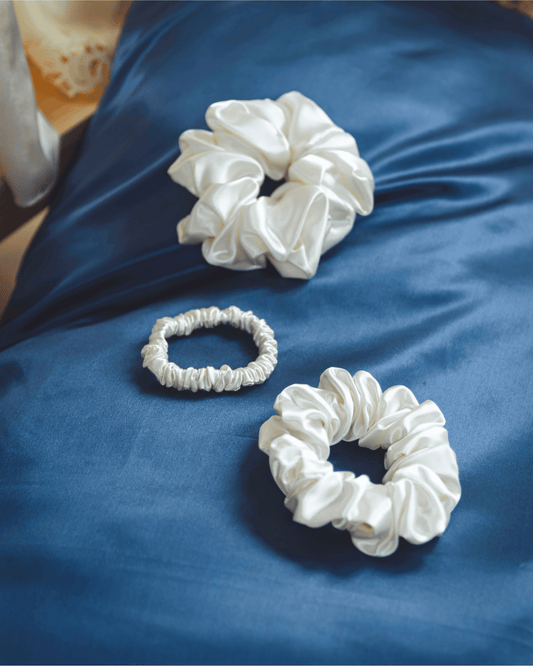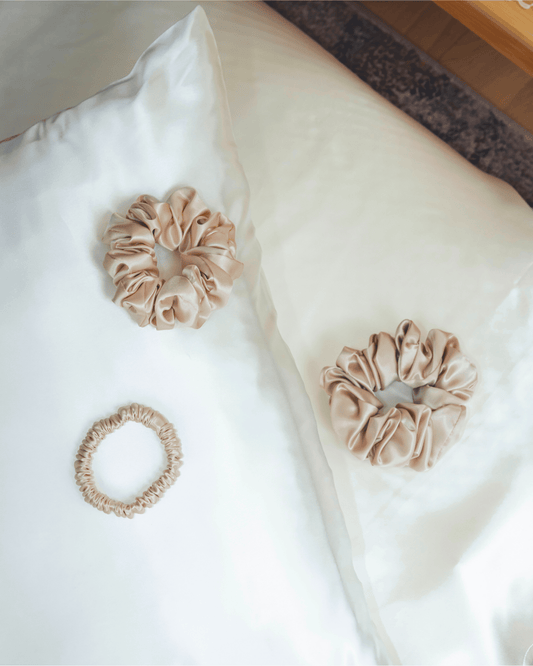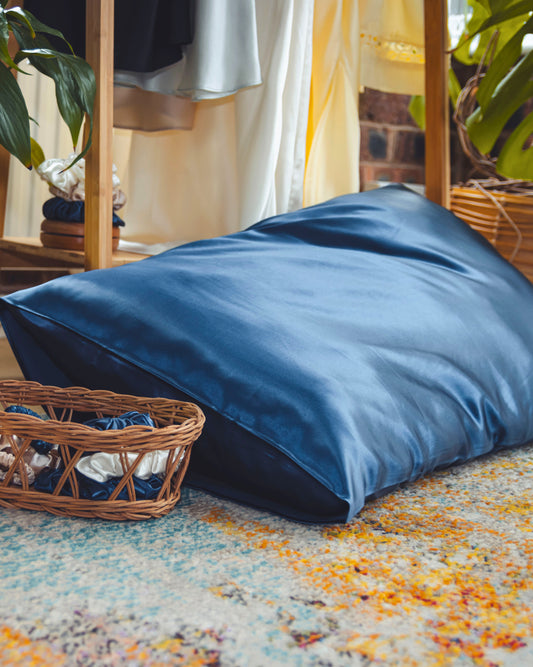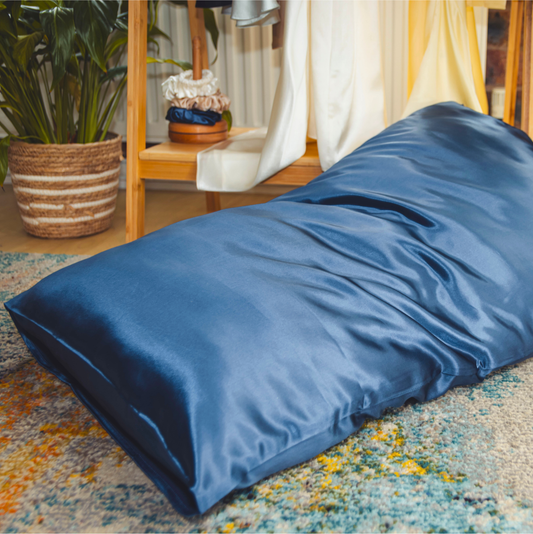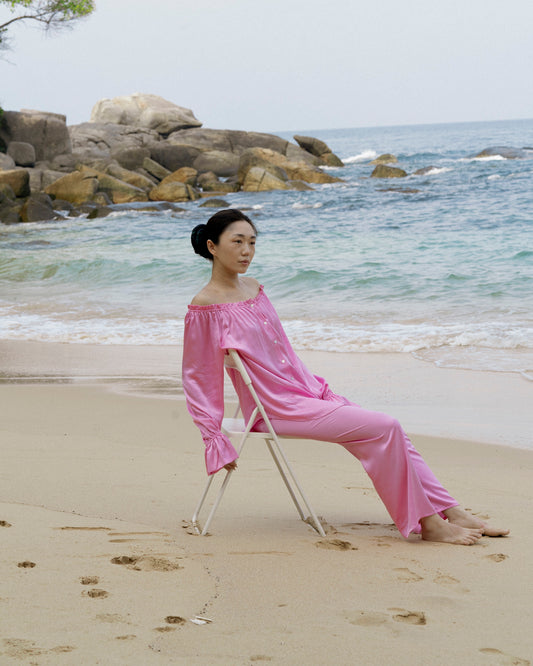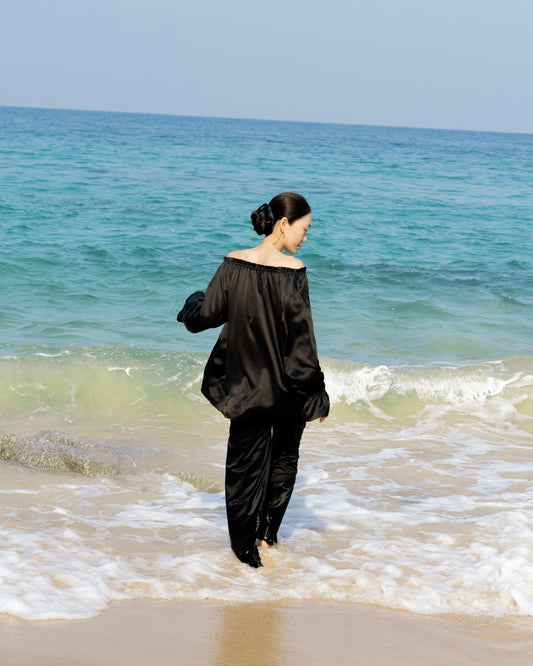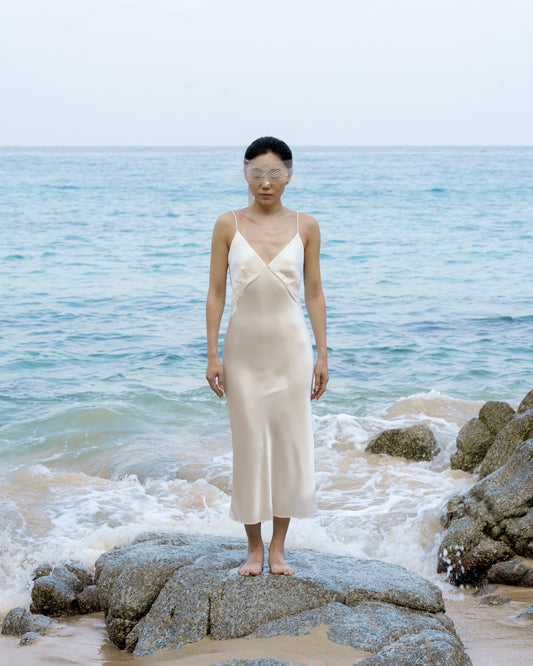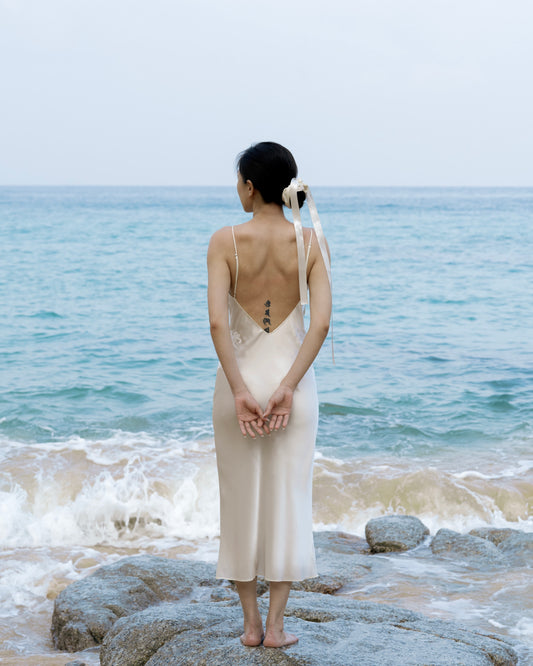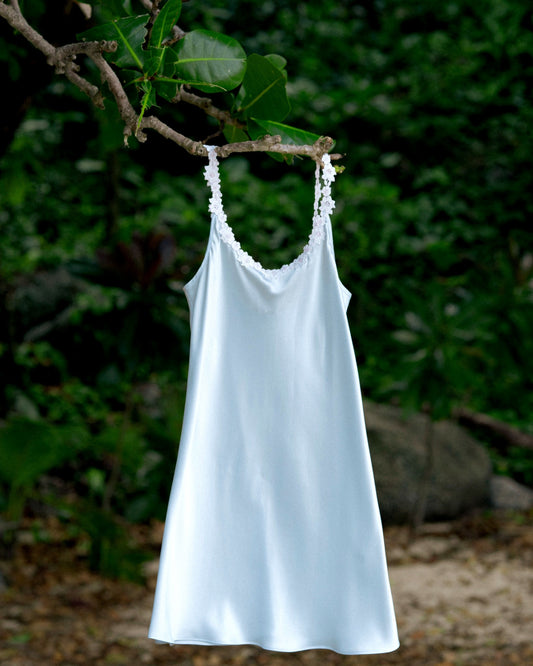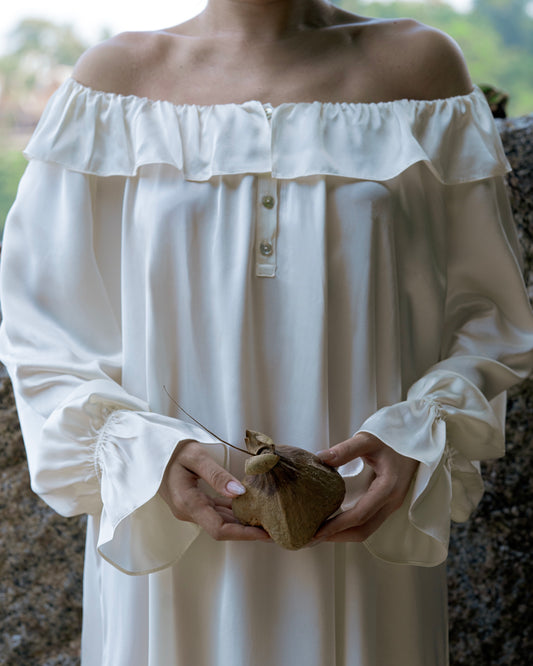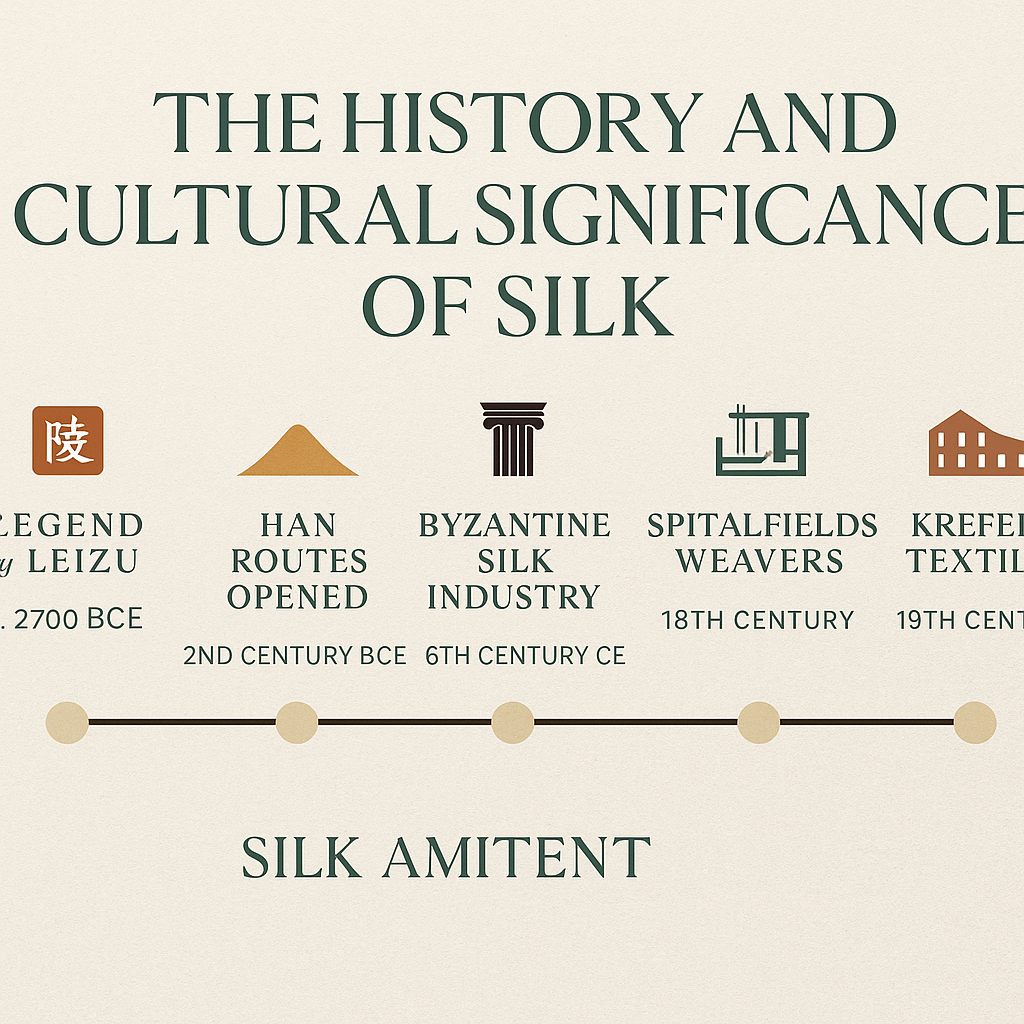
The History and Cultural Significance of Silk
Share
How a single thread connected East and West
Introduction
Silk is more than a fabric. Silk is a story. The story spans empires, trade routes, and daily life. The story still shapes how we dress and how we think about luxury. This post traces that journey. The journey begins in China. The journey links the East and the West. The journey arrives in London and in Germany today.
Origins in China
Chinese legend credits Empress Leizu with the discovery of silk. The story places her in the 27th century BCE. A cocoon fell into her hot tea. The cocoon unraveled. The thread revealed a secret. The secret became sericulture, weaving, and art. The legend set the cultural tone for silk in China. It linked silk to ingenuity and care.
Silk-making grew with skill and time. Regions near today’s Suzhou and Hangzhou became renowned. These places still carry the craft. Museums in Suzhou document techniques from ancient times. They show reeling, weaving, and embroidery as living heritage. UNESCO recognizes sericulture and silk craftsmanship of China on its Intangible Cultural Heritage list. The listing highlights Zhejiang, Jiangsu, and Sichuan as core regions. The listing also honours women’s roles in the craft.
The Silk Road: A Network, Not One Road
Silk travelled with diplomacy and trade. The Han dynasty opened formal links to Central Asia. The envoy Zhang Qian mapped the path in the 2nd century BCE. His mission under Emperor Wu connected courts, caravans, and ideas. Overland routes then linked China to the Mediterranean world.
UNESCO describes these Silk Roads as a network. The Chang’an–Tianshan corridor shows 5,000 km of routes. The routes took shape from the 2nd century BCE to the 1st century CE. The routes stayed active for centuries. The network carried goods and beliefs. It carried technologies and art. It carried silk most of all.
The Maritime Silk Road
Trade also moved by sea. Ships crossed the South China Sea and the Indian Ocean. Ports connected East Asia, South Asia, Arabia, and East Africa. The maritime routes grew by the 2nd century BCE. They flourished through medieval times. Sea-lanes carried silk, ceramics, and spices. They also carried stories, faiths, and designs.
Silk Reaches the West
Silk dazzled the Roman world. Demand and prices soared. Roman leaders even debated luxury limits. Ancient sumptuary laws tried to control costly dress and excess. The debate shows how silk signalled status and desire.
By the 6th century CE, the secret of silkworms moved west. Two monks carried silkworm eggs to Constantinople. Emperor Justinian I backed the mission. Byzantium began its own silk industry. Europe’s silk story started to change.
Silk as Currency and Ceremony in China
Silk was wealth in more than one sense. In Tang China, the state paid soldiers and taxes partly in silk. Texts from Silk Road sites record these textile payments. Silk acted like money and message. It conveyed value, rank, and alliance.
Craft Moves to Europe
Skills followed demand. Huguenot silk weavers from France settled in Spitalfields in London. They built an 18th‑century centre for fine silks. The district’s lofts and patterns still tell that story.
Germany built its own centres. Krefeld became known as the “velvet and silk city.” Nineteenth‑century mills, schools, and guilds shaped expertise there. The city celebrates that textile history today.
Symbols, Rituals, and Everyday Life
Silk carries meaning in East and West. In China, silk garments marked rank and occasion. Silk framed weddings, ceremonies, and diplomacy. Silk appeared in paintings, fans, and calligraphy scrolls. In Europe, silk signalled court culture, guild skill, and urban style. The fabric joined ritual with reality. It was both rare and practical. It moved from palace halls to home linens as techniques spread.
Suzhou and Hangzhou Today
Suzhou and Hangzhou still honour silk. Museums and workshops keep the craft visible. They teach reeling, weaving, and embroidery with care. They connect visitors with the fibre’s feel and its past. They show that silk is a living tradition. They show that “Made in China” means made with mastery.
A Modern Digital Silk Road
Online platforms now connect craft to wardrobes worldwide. The path runs from Jiangsu and Zhejiang to London and Berlin. The exchange is faster. The values can still be slow. We can choose careful design over churn. We can choose 100% mulberry silk for quality and longevity. We can measure luxury in seasons, not in trends.
Why This History Matters
History explains value. Silk required trees, time, and skilled hands. Silk travelled through deserts and seas. Silk shaped taxes, trade, and taste. When you touch silk, you touch that journey. You touch a thread that still links East and West. You join a story that respects nature, work, and time.
Keywords: history of silk; cultural significance of silk; Silk Road history; Suzhou silk; Hangzhou silk; 100% mulberry silk from Suzhou, China; London Spitalfields silk; Krefeld silk; slow luxury UK; slow fashion Germany.
Sources
- Legend of Leizu and early sericulture. (EBSCO+1)
- Zhang Qian and Han‑era opening of overland routes. (Encyclopedia Britannica)
- UNESCO Silk Roads (Chang’an–Tianshan corridor) overview. (UNESCO World Heritage Centre)
- Maritime Silk Road background and sea trade links. (Wikipedia+1)
- Byzantine silkworm episode under Justinian. (EBSCO)
- Silk as tax and currency in Tang China. (Cambridge University Press & Assessment)
- Suzhou Silk Museum and living heritage status. (Wikipedia+1)
- Spitalfields Huguenot weavers in London. (The Huguenots of Spitalfields)
- Krefeld as Germany’s “velvet and silk city.” (krefeld.de+1)



